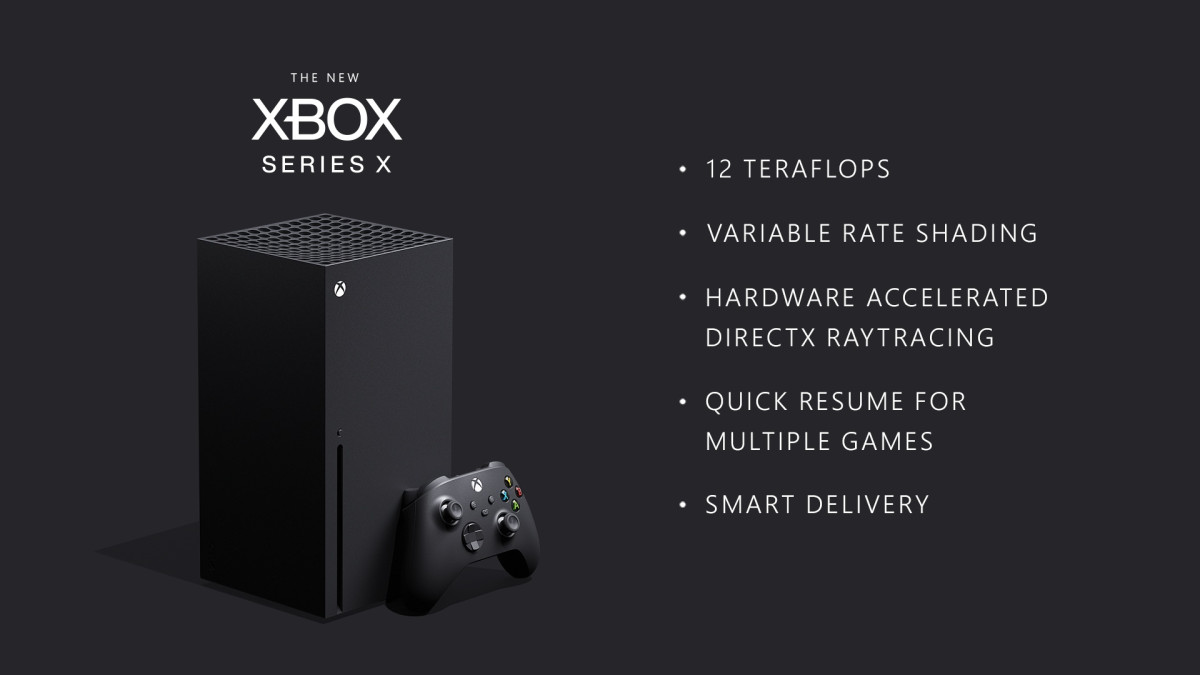PS5 and Xbox Series X teraflops: What this key spec means for you
What's a teraflop, and what does it mean for PS5 and Xbox Series X

The Xbox Series X and PS5 both promise to be significant generational leaps, and one of the most talked about performance metrics for each console is TFLOPS, spoken as “teraflops.” This number is a performance metric for processors, but what it means and how an increase in this number translates into gaming performance can be a little confusing.
- All the PS5 games we know about
- PS5 vs. Xbox Series X: Which next-gen console will win?
The teraflop discussion has been making the rounds again lately, as Xbox chief Phil Spencer revealed that the Xbox Series X specs will include “12 TFLOPS of GPU performance.” So here's everything you need to know about teraflops, and how they'll impact your PS5 and Xbox Series X experience.
What is a teraflop?
Without getting into the complex math behind the name, FLOPS are FLOating Point operations per Second which is a measure of a processor's ability to do math with dynamic number ranges. A teraFLOP is 1 trillion floating point operations per second.
Naturally, the bigger this number is, the more computational power a processor is going to have and we’ve only recently gotten to the point in consumer tech where double-digit teraflops are a realistic thing to talk about.
Is 12 teraflops a lot?

Yes, and this is why Microsoft is very quick to toss out that figure. The company was also quick to mention the Xbox One X’s still-impressive 6 teraflops. Doubling that figure to 12 puts the Series X out in front of any other consumer graphics processor on the market, even for PC. And when Series X launches in holiday 2020, it’ll likely be the most powerful gaming setup you can buy anywhere near its assumed price range of $500 - $600.
What do teraflops do for performance, graphics or framerate?
This is where things get a little murky because the exact nature of performance also depends heavily on all the other components in the machine, like memory, read/write speed and other elements of the graphics processor aside from the raw number of operations it can perform. Any console or gaming PC will only be as powerful as its weakest component.
It’s also not a one-to-one comparison with other processor architectures, meaning you can’t directly compare the 12 teraflops of an AMD RDNA processor, like the one you’ll find in an Xbox Series X, to the FLOP number on an Nvidia GPU. However, the Series X’s primary competitor, PlayStation 5, will use a very similar processor with likely fewer teraflops.
Sign up to get the BEST of Tom's Guide direct to your inbox.
Get instant access to breaking news, the hottest reviews, great deals and helpful tips.
What does 12 teraflops mean for Xbox Series X?
Microsoft seems determined to keep the upperhand in the hardware arms race. Depending on a host of other factors like hardware adoption rates and developer incentive to leverage all of Xbox Series X’s power, we could see a noticeable performance gap between Series X and PS5 due in part to the high teraflop count.
The teraflop stat also comes backed by a very impressive feature set. Thanks to hardware upgrades like a solid state hard drive for faster load times and software features like DirectX Ray Tracing support, you’ll see a significant performance increase with Xbox Series X over Xbox One.
PS5 teraflops: How many will it have?

Sony has yet to reveal just how many teraflops of GPU power the PS5 will offer, and rumors around the spec have varied. A recent rumor making the rounds on ResetEra pegs the PS5 at around 9 TFLOPS, which would give the Xbox Series X an edge. However, an old rumor from a Pastebin post discovered (via Notebookcheck) in 2019 pegs the PS5 as having a whopping 14 teraflops of performance, which would put it ahead of Microsoft's machine. We should know more about exactly how the PS5 stacks up to the Xbox Series X as both consoles' holiday 2020 launch draws closer.
Andrew Melcon is a freelance writer who specializes in covering games and gaming hardware. He's tackled everything from PC game controllers to Pokémon and PUBG and his work has appeared on sites including Tom's Guide, Tom's Hardware, Laptop Mag, and more.
-
Stephen_144 I recall a few years back graphics engineer Timothy Lottes, a member of GPU maker AMD’s Game Engineering team did a study done to try and estimate how many TFLOPS a console would need to successfully run AAA games at native 4k@60Hz. I believe they said 14.9 TFLOPS is needed.Reply
"Lottes’ simplified rule-of-thumb performance bar for outputting 60 frames a second at 4K stands at 14.7 Tflops per second "
Forget the marketing the 4k/60 is the sweet spot these next consoles are going to excel at.
